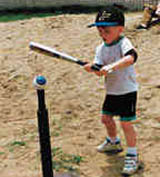 In the early 1980s, there was only one international school in Shanghai. Today, there are 25, including the Shanghai American School, the Shanghai Japanese School, the Shanghai German School, the Shanghai French School, the Shanghai Singaporean School, the Shanghai South Korean School, and the Shanghai Union International School. Every year, an increase of 300 to 500 more students from other countries study in Shanghai, and last year, approximately 5,000 students from more than 30 countries studied there.
In the early 1980s, there was only one international school in Shanghai. Today, there are 25, including the Shanghai American School, the Shanghai Japanese School, the Shanghai German School, the Shanghai French School, the Shanghai Singaporean School, the Shanghai South Korean School, and the Shanghai Union International School. Every year, an increase of 300 to 500 more students from other countries study in Shanghai, and last year, approximately 5,000 students from more than 30 countries studied there.
Jin Jieying, a foreign student, talked with me in fluent Chinese. "My father is in the toy business in Shanghai," she said. "My family, including my mother, my brother, and I, moved to Shanghai three years ago. My brother is now in second term in the International Department of the Shanghai Senior Middle School and he wants to study in Beijing after he graduates. My father can hardly speak any Chinese, and my brother and I often teach him what we have learned in class. My mother is a housewife, and she learns Chinese on television.
"Among the three languages I'm learning, I like Chinese the best. I'm just curious about the mysterious Chinese language, and I feel excited whenever I learn a new word. I think English is ordinary because too many people speak it. The highest level of the HSK test for foreigners is 11, and now I am preparing for the test at level 10." (HSK is the Hanyu Shuiping Kaoshi, or Chinese language proficiency test.)
Lila is the director of the Chinese Department of the Shanghai American School. She received her primary education in Hong Kong, her high-school education in South America, and her college education in the United States, so she is familiar with both Chinese and Western educational systems.
After graduation, Lila taught at an international school in Berkeley, California. "The Chinese way of education offers students a solid foundation for basic knowledge," she says, "but the American way of education is better for students in increasing creativity. The best way is to combine the two."
Sunny, another teacher, has a different opinion. "Education should be different according to the situation of the country. The American way of education emphasizes the development of the students' potential by encouraging the students to do what seems to be impossible, while the Chinese way focuses more on the construction of a team spirit. In the Chinese way, memorization is the main way to grasp things, and teachers always play the main part in education, while in the American way, encouraging students to use their own minds is the main method, and students play the main part in education. Both ways have their advantages."
Tony is the director of the Shanghai American School. Before coming to China, Tony had lectured at and worked as director of international schools in other countries. He has been engaged in education for 35 years. "I'm glad to be working in China," he says.
Tony's wife has also come to Shanghai and teaches in the school's kindergarten. Their only daughter has learned Chinese in college and is now doing business in China.
"The Shanghai American School is the largest international school in China," says Tony. "It was established in 1912, suspended in 1950, and resumed in 1980. At the very beginning, there were only six students, all children of American diplomats. After years of development, the school has two branches, in the Pudong and Puxi districts."
"Our schools in Shanghai have facilities as sophisticated as the schools in the United States," he adds, "and they have a combined student body of 1,500 from 52 countries and regions. Most of them are children of personnel in foreign-funded enterprises. The schools offer courses for students in kindergarten, primary school, middle school, and high school. We have invited more than 200 teachers, highly experienced and with excellent language foundations, from Hong Kong and Taiwan as well as from the United States, Canada, Australia, Britain, South Africa, Germany, Holland, Malaysia, and other countries."
Tony believes that international schools in China have a promising future as the country enters the WTO. Schools like his will see greater progress and at the same time will face the challenge of competition.
(China Pictorial 04/13/2001)
